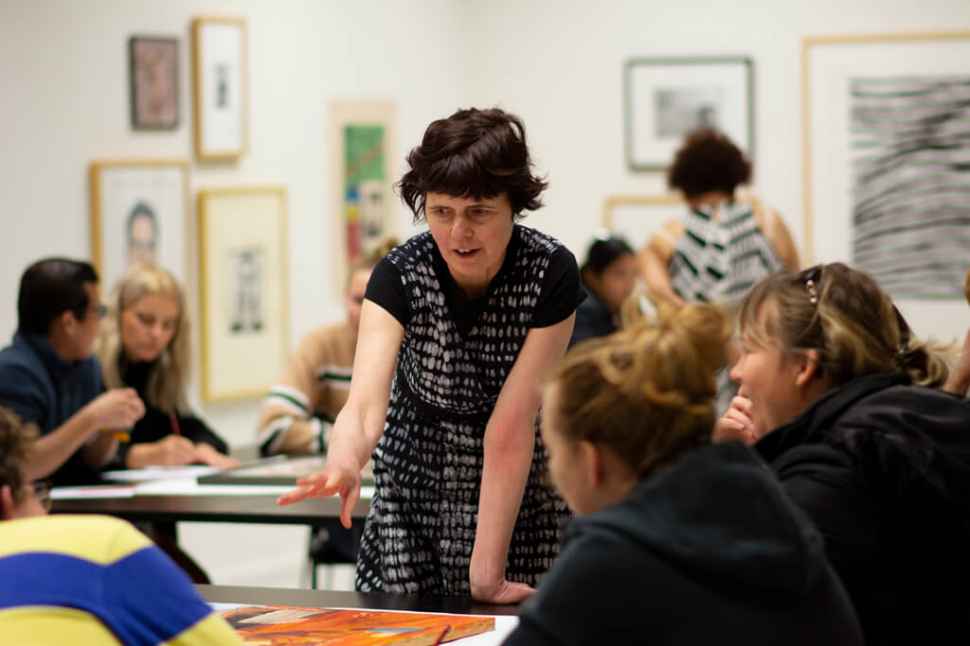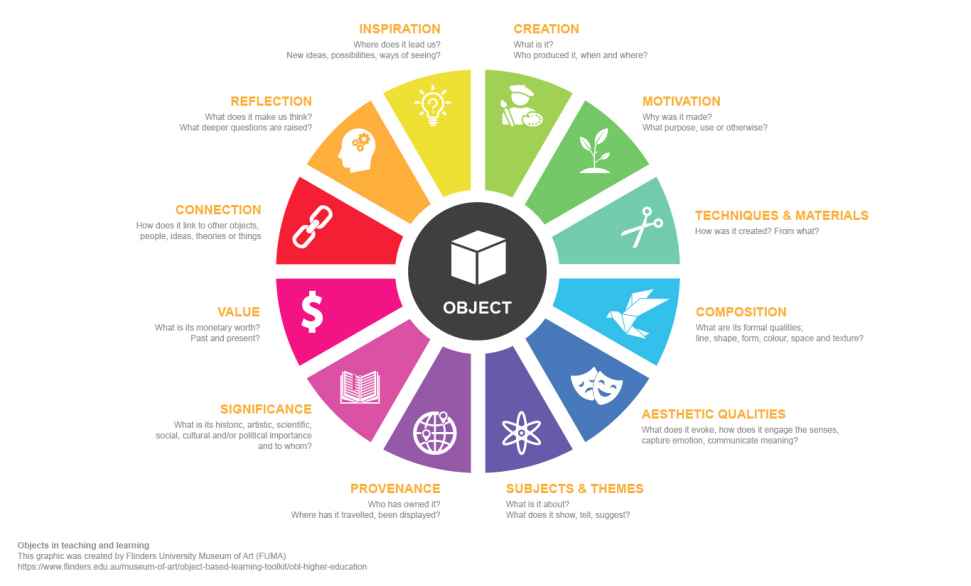Object-based learning (OBL) in Higher Education
Since the turn of the twenty-first century there has been a growing interest in the study of materiality as a foundation for learning across disciplines, particularly in the humanities and social sciences. In this context object-based learning (OBL) has gained traction in higher education as a powerful pedagogical method.
University museums and keepers of other university collections have been active in these developments promoting the possibilities of the objects in their care and finding ways of meaningfully linking them to teaching and learning at their host institutions.
What is OBL?
OBL is a ‘hands-on’ approach to education that draws on active and experiential learning models and constructivist understandings of knowledge production. In practice, students encounter and engage with objects in a structured learning environment, where objects are used in their material form as the primary medium for learning.
OBL is premised on the idea that an object is complex and multifaceted, that it can ‘speak’ across disciplines and be interrogated from many different angles. In this view, objects can serve as portals into subjects, themes or issues; as triggers to new ideas and understandings; or as catalysts for self-reflection, creative work or deeper investigation.

Objects in teaching and learning

The ‘Objects in teaching and learning’ graphic was created by Flinders University Museum of Art (FUMA) in 2019 as part of an ongoing FUMA program supporting cross-disciplinary engagement with the visual arts. It was inspired by the ‘Learning from Objects’ diagram from Learning through Culture, The DfES Museums and Galleries Education Programme: a guide to good practice (2002) DfES publication DfES/0159/2002, page 11. Published by RCMG, Feb 2002.
The graphic is downloadable as a JPG and PDF for wider circulation; please ensure the creator and source is acknowledged.
Why use OBL in teaching and learning
Practice-led research indicates that OBL fosters experiential engagement with knowledge and can train students from diverse disciplines in transferable skills vital to their success at university and in the wider world. Some of the key benefits have been reported as follows:
- OBL engages the senses, particularly touch, sight and smell;
- OBL accommodates different learning styles;
- OBL motivates deep learning;
- OBL provides experiential engagement with primary research methods and materials;
- OBL exposes students to complexity and ambiguity, to open-ended meanings and differing points of view;
- OBL can help students grapple with ‘troublesome’ knowledge;
- OBL develops observation skills and visual literacy;
- OBL exercises and advances employability skills including critical and creative thinking, problem solving and oral communication skills;
- OBL complements digital, lecture and text-based teaching approaches;
- OBL promotes interdisciplinary connections and exchange.
How to use OBL in curriculum
There are many ways in which to create unique learning experiences and enrich curriculum through objects. These may be one-off engagements or course-long initiatives in which close looking, open-ended questioning and active learning techniques are encouraged. Some models to consider when thinking about the possibilities and potential of art:
Introduce students to the broader social, political and/or cultural context of a topic by drawing on artworks from a certain period or locale. Topics might also be framed by artworks dealing with a specific subject or theme.
Use artworks to lead students into deeper investigations of topic content. Look at and compare how artists have dealt with the subject matter, consider the history of the artworks and experiences of their makers, and consider the ways in which selected artworks can problematize a topic.
Teach students to describe, critically read, analyse and interpret images to help them become thoughtful, careful observers and to sharpen their attention to visual cues. For example, looking at art closely has been shown to enhance clinical observation skills in medical students.
Employ artworks as triggers to challenge students to ‘think outside the box’, as generators of new ideas and catalysts for creative work. Mind-mapping, free writing and activities that require students to ask questions of artworks, inspire new ways of seeing and thinking about the world.
Introduce the methodological concept of art as another form of primary text or cultural document. Consider how visual material might bring new voices and perspectives to light and can offer evidence about a political, social, historical, or cultural moment.
Ask students to reflect on a work of art on a personal level: how it might connect with an emotion, experience or aspect of their life. As a group exercise, explore the ways in which artworks can make people feel and how different students looking at the same image can see different things.
This approach requires an environment of trust, and support for students for whom activities might raise difficult issues. It has been adopted in medical schools and other health related disciplines to enhance the professional skills required in clinical practice but is a useful model for other professional contexts in which human interactions are pivotal.
Need help?
Please don't hesistate to contact FUMA if you require any assistance with using the OBL toolkit, or would like to submit a case study.
If you are interested in working with FUMA to enrich curricula and expand your pedagogical practice through the use of art objects, start by exploring the toolkit and then submit an OBL expression of interest form.
Flinders University Museum of Art
Flinders University I Sturt Road I Bedford Park SA 5042
Located ground floor Social Sciences North building, Humanities Road adjacent carpark 5
Telephone | +61 (08) 8201 2695
Email | museum@flinders.edu.au
Monday to Friday | 10am - 5pm or by appointment
Thursdays | Until 7pm
Closed weekends and public holidays
FREE ENTRY
Flinders University Museum of Art is wheelchair accessible, please contact us for further information.


